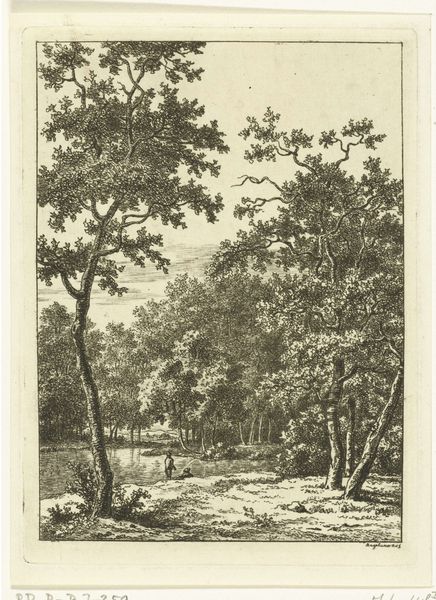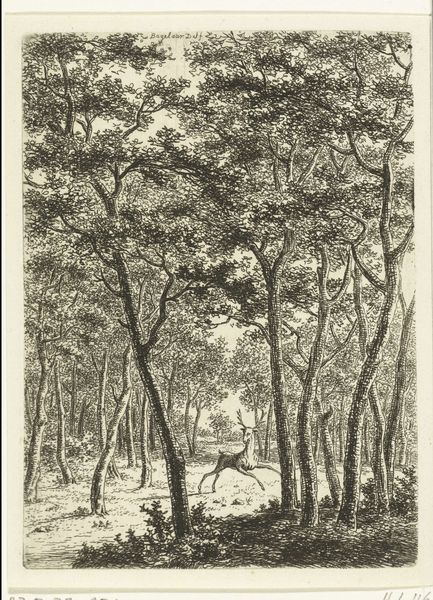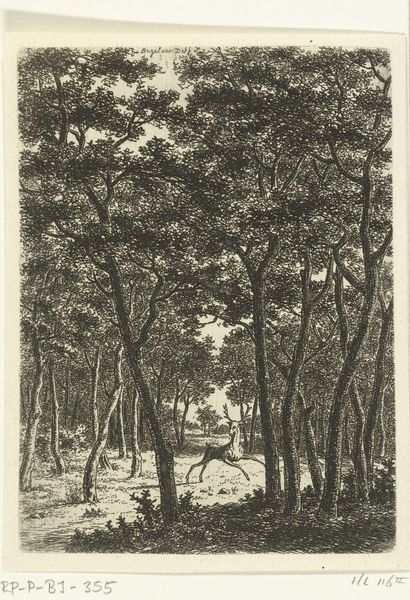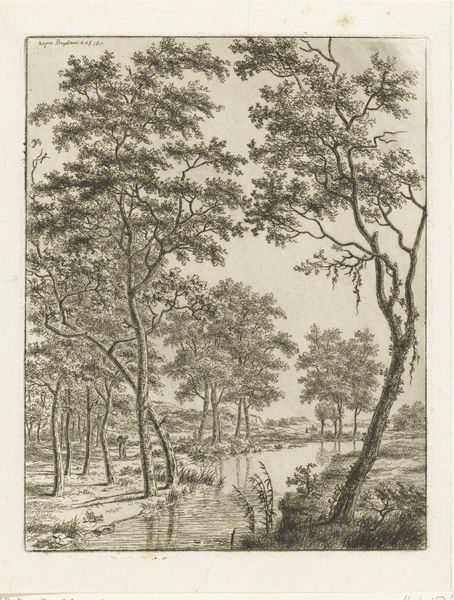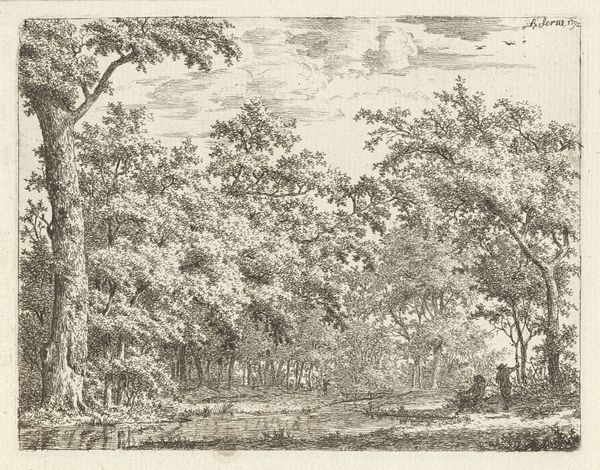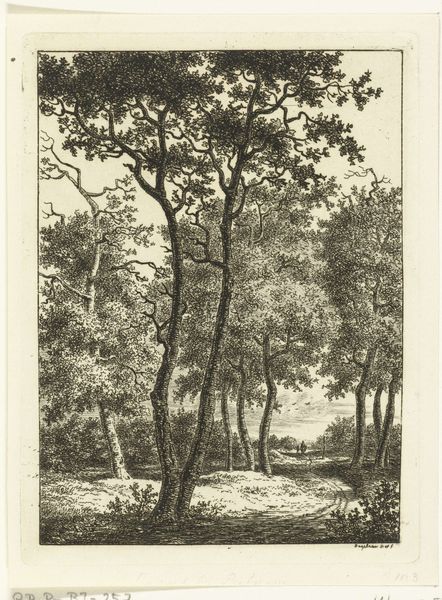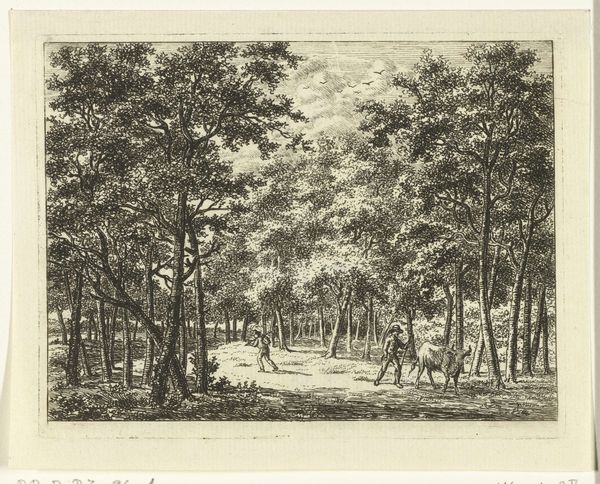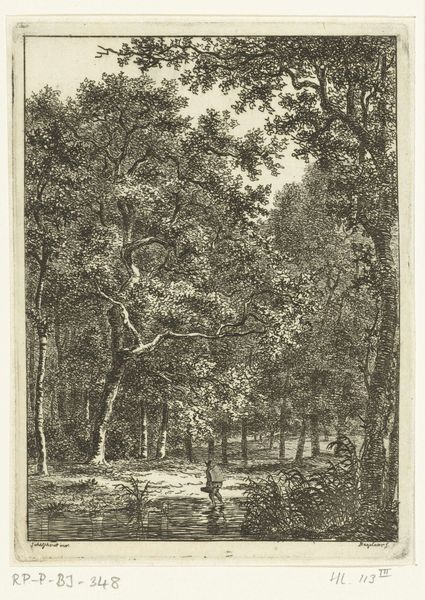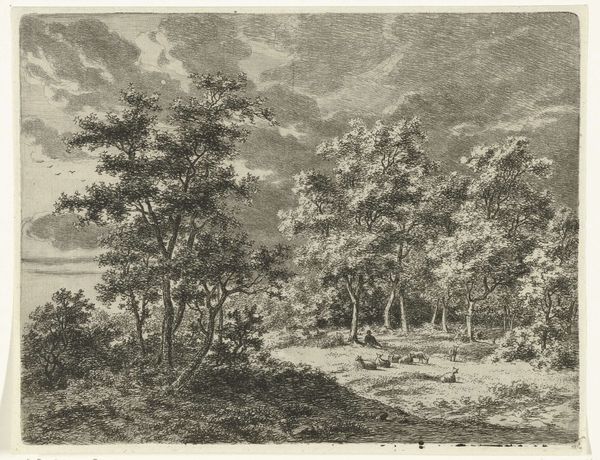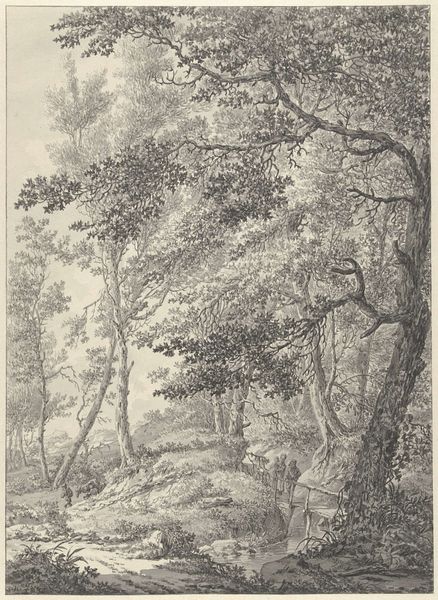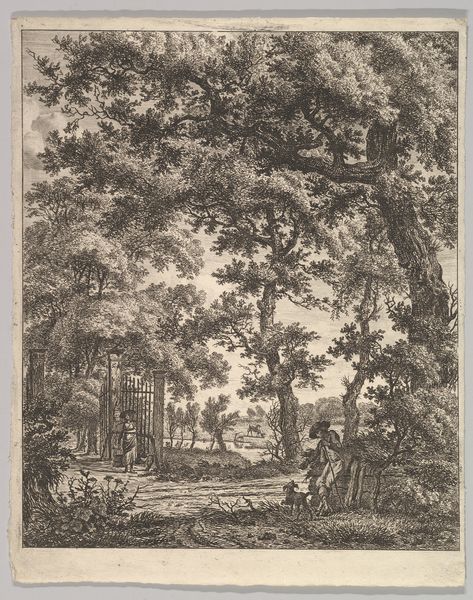
drawing, etching, ink
#
pen and ink
#
landscape illustration sketch
#
drawing
#
pen drawing
#
pen illustration
#
pen sketch
#
etching
#
pencil sketch
#
old engraving style
#
landscape
#
ink
#
romanticism
Dimensions: height 139 mm, width 105 mm
Copyright: Rijks Museum: Open Domain
Curator: Let’s turn our attention to this etching, "Bosgezicht, op de voorgrond een tekenaar," or "Wooded Landscape with a Draftsman in the Foreground," created sometime between 1798 and 1837 by Ernst Willem Jan Bagelaar. Editor: It’s a dense, almost claustrophobic image. The trees dominate, and the stark black and white creates a somewhat somber mood, a feeling of being enclosed. Curator: Bagelaar worked during a time when the appreciation of nature and the rural was becoming increasingly important, in response to the industrialization of the landscape and the socio-political unease roiling through Europe at that time. The forest here becomes a site of refuge and reflection. Editor: It's interesting how the artist has positioned the figure of the draftsman within that context. The act of observation, of documenting the natural world, takes center stage. It reads like an affirmation of humanity’s connection with nature, though one filtered through a specific gaze – that of the educated artist, of course. What isn't obvious at first, but apparent in subsequent glances, are the walkers far off in the background that enhance a sense of nature's overwhelming scale. Curator: And notice how Bagelaar uses the technique of etching to build up layers of detail, particularly in the rendering of the leaves and branches. There is a commitment here to depicting the wild, abundant quality of nature. Editor: That technique really brings out the tension between control and chaos. There’s the precision of the lines, but then the sheer profusion of them, mimicking the complexity of a real forest. I'm curious, who had access to these kinds of landscapes at that point in history, and how are their portrayals potentially reflective of their privileged perspectives? Curator: Certainly, the romanticization of nature could be interpreted through a lens of class and access. It reflects a particular leisure enjoyed by some in society who were detached from labor and industrial growth. It also created a kind of ownership, of curating our relationship to an imagined "pure nature." Editor: Thank you, I really appreciate the nuance here; it deepens my appreciation, and reminds me to think critically. Curator: Exactly. This piece really serves as a time capsule; it enables us to see how notions of landscape, identity, and socio-political reality come together in artistic representation.
Comments
No comments
Be the first to comment and join the conversation on the ultimate creative platform.
